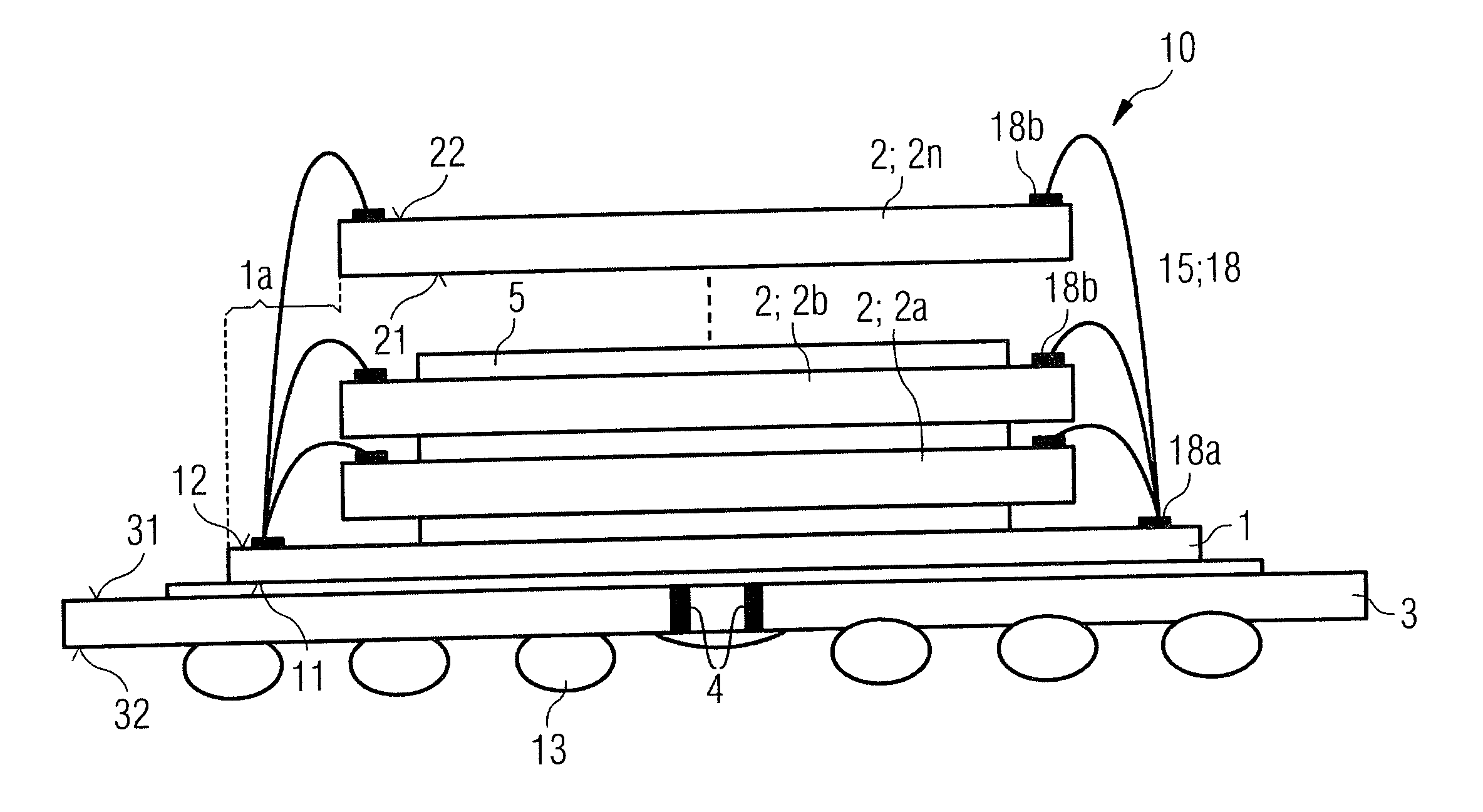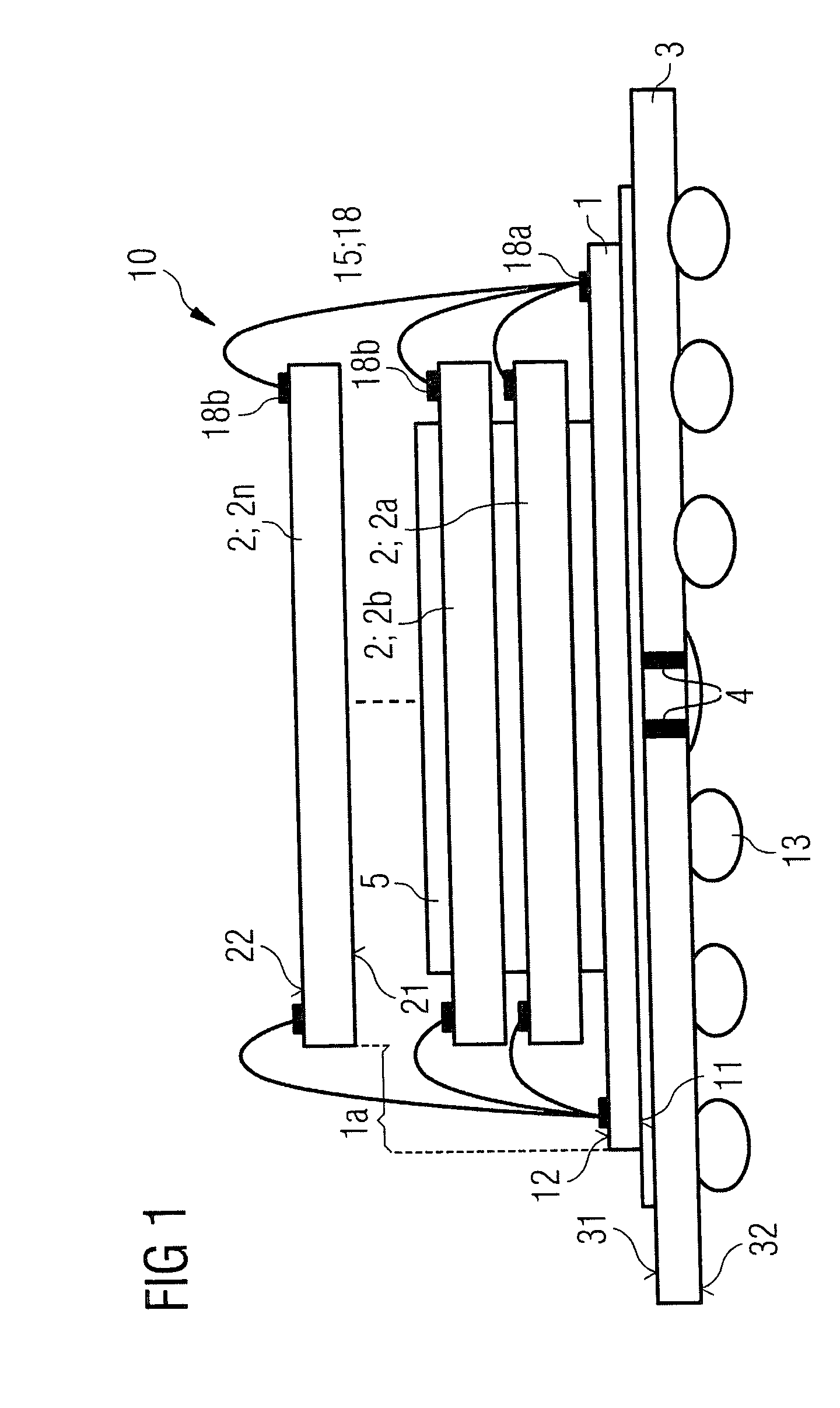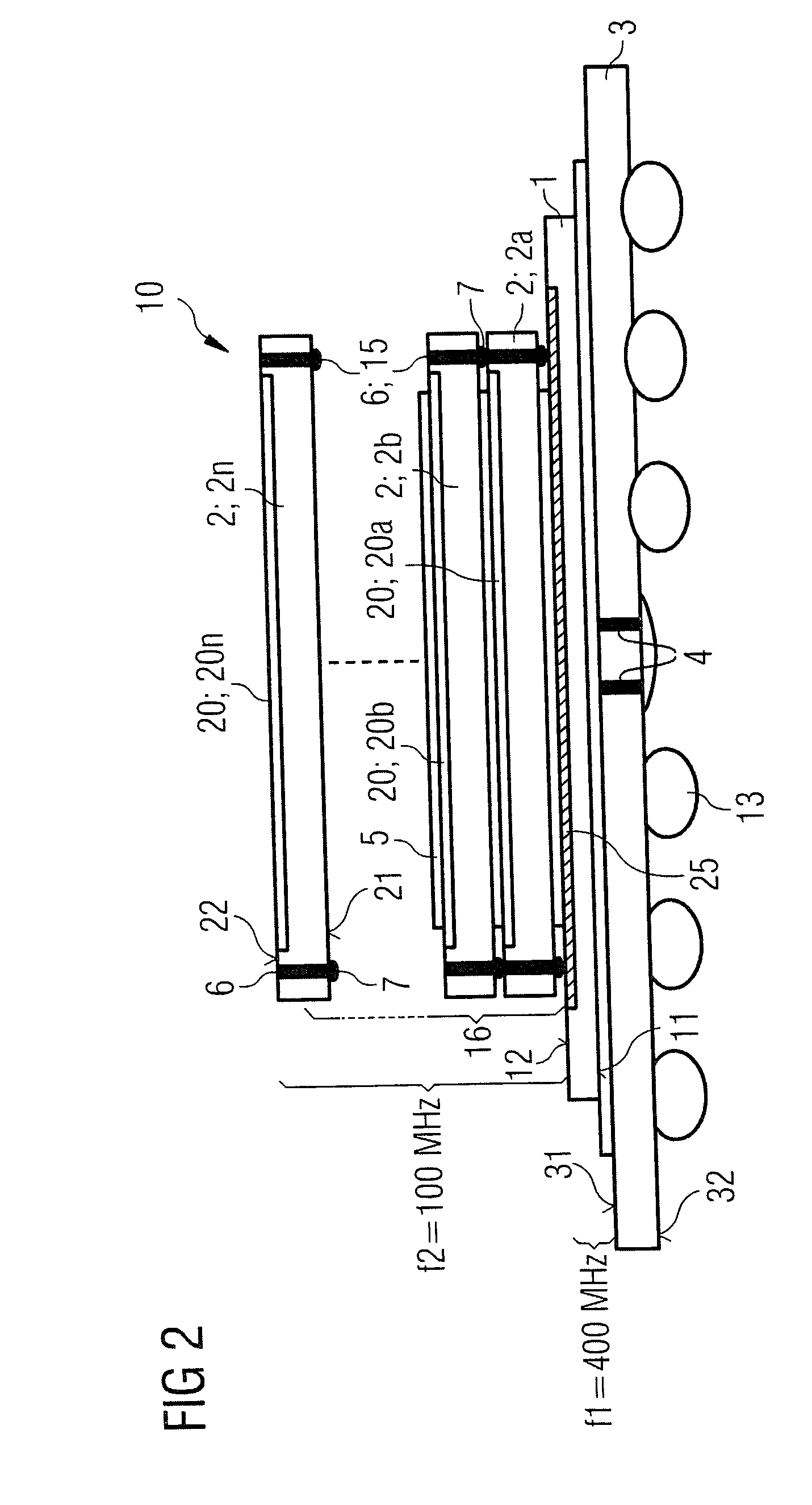Semiconductor product and method for forming a semiconductor product
a semiconductor and product technology, applied in the field of semiconductor products and semiconductor products, can solve the problems of increasing the risk of misalignment and other critical parameters of semiconductor manufacturers, the inability to shrink microelectronic elements in semiconductor devices, and the need for new techniques for increasing the storage capacity of memory devices, etc., to achieve the effect of increasing the number of memory cells, increasing the storage capacity, and increasing the number of bits
- Summary
- Abstract
- Description
- Claims
- Application Information
AI Technical Summary
Benefits of technology
Problems solved by technology
Method used
Image
Examples
first embodiment
[0085]FIG. 1 illustrates a cross-sectional view of a semiconductor product of the invention. The semiconductor product 10 comprises one first semiconductor chip 1 and a plurality of equally sized second semiconductor chips 2; 2a, 2b, . . . , 2n stacked on one another and being supported by the first semiconductor chip 1. For stacking the first and second semiconductor chips 1, 2 to one another, adhesive layers 5 may be provided therebetween. The second semiconductor chips 2 each comprise at least one memory bank (not illustrated in FIG. 1) which memory banks for each second memory chip may extend over almost the entire upper main surface 22 of the respective second semiconductor chip (see FIG. 2). The first and second semiconductor chips 1, 2 may be made of silicon or any other semiconductor material, for instance, and each comprise an integrated circuit. The integrated circuit of the first semiconductor chip 1 essentially is formed of a input / output circuitry which, in a convention...
second embodiment
[0088]FIG. 2 illustrates a cross-sectional view of a semiconductor product of the present invention. According to FIG. 2, the second semiconductor chips 2 are stacked on one another and on the first semiconductor chip 1 by means of electrically conductive connecting means 15, which comprise through-hole fillings 6 and bond balls 7. Thereby no bond wires are required that would need to be provided laterally beyond the size of the second semiconductor chips 2. Each second semiconductor chip 2 comprises a plurality of through-holes that are filled with through-hole fillings 6 extending between the two respective main surfaces 21, 22 of the respective second semiconductor chip 2. The bond balls 7 are provided in spaces between two respective second semiconductor chips 2 so as to connect two through-hole fillings 6 to one another. Further elements illustrated in FIG. 2 correspond to those elements having the same reference numbers as indicated in FIG. 1.
[0089] In addition thereto, FIG. 2...
third embodiment
[0092]FIG. 3 illustrates a cross-sectional view of the invention. According to FIG. 3, the electrically conductive connecting means are comprising through-hole fillings 6 and bond balls 7 as in FIG. 2, again conductive columns 16 formed of through-hole fillings 6 and bond balls 7 arranged on top of one another in alternating order are provided. In contrast to FIG. 2, the electrically conductive connecting means 15 in FIG. 3 are provided in laterally centered positions of the second semiconductor chips 2 rather than at the edges of the second semiconductor chips 2. In particular, the bond balls 7 are provided in recesses of the adhesive layers 5. Accordingly, the conductive columns 16 may be arranged at any desired lateral position within the lateral extensions of the second semiconductor chips 2. Further elements illustrated in FIG. 3 correspond to those elements illustrated in FIGS. 1 and 2 having the same reference numbers. The exemplary operating frequencies illustrated in FIG. 2...
PUM
 Login to View More
Login to View More Abstract
Description
Claims
Application Information
 Login to View More
Login to View More - R&D
- Intellectual Property
- Life Sciences
- Materials
- Tech Scout
- Unparalleled Data Quality
- Higher Quality Content
- 60% Fewer Hallucinations
Browse by: Latest US Patents, China's latest patents, Technical Efficacy Thesaurus, Application Domain, Technology Topic, Popular Technical Reports.
© 2025 PatSnap. All rights reserved.Legal|Privacy policy|Modern Slavery Act Transparency Statement|Sitemap|About US| Contact US: help@patsnap.com



